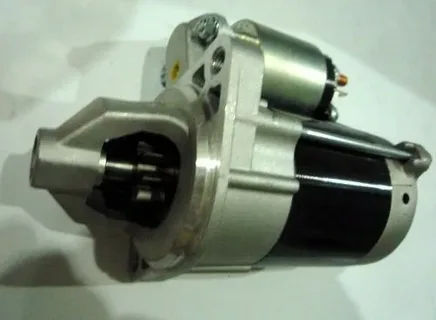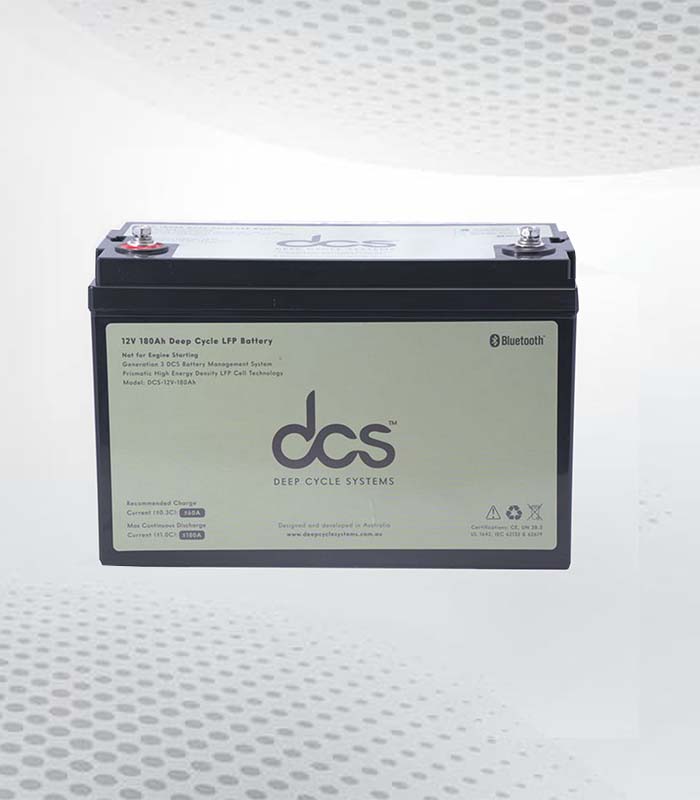If you are experiencing difficulties starting your Mitsubishi L300, it may be time to replace the starter motor. A faulty starter motor can cause your vehicle not to start, leaving you stranded. In this ultimate guide, we will walk you through replacing the starter motor in your Mitsubishi 380 Starter Motor to quickly get you back on the road.
Understanding the Importance of Your Mitsubishi L300 Starter Motor
The starter motor plays a pivotal role in the functionality of your Mitsubishi L300, acting as the catalyst that sets your engine in motion. This essential component engages with the engine’s flywheel to begin the combustion process necessary for your vehicle to operate. Without a working starter motor, initiating your vehicle’s engine becomes impossible, highlighting the importance of this part in your daily driving experience. Regular attention and maintenance of the starter motor are critical to prevent unexpected breakdowns.
Neglecting its care can lead to issues, from minor inconveniences to major disruptions, potentially stranding you with a non-starting vehicle. Understanding the role and function of the starter motor in your Mitsubishi L300 underscores the need for prompt action when facing any signs of malfunction. Early detection and replacement of a failing starter motor ensure that your Mitsubishi 380 remains reliable, responsive, and ready to serve your mobility needs without interruption. This proactive approach safeguards your vehicle’s operational integrity and contributes to a smoother and more enjoyable driving experience.
Identifying Signs of Starter Motor Failure
Recognizing when your starter motor is nearing the end of its service life is crucial to avoid being stranded due to a non-starting Mitsubishi L300. One of the most unmistakable signs of impending failure is a distinct clicking sound when you attempt to start the engine. This noise suggests that the starter motor cannot engage the engine’s flywheel to commence combustion. Additionally, suppose you observe that the engine takes longer than usual to crank or seems to labour heavily during the startup. In that case, this sluggish performance can indicate a starter motor struggling to perform its task effectively.
Another symptom that should prompt immediate attention is the complete absence of engine activity when turning the key. This scenario indicates that the starter motor cannot operate the engine, possibly due to internal damage or failure. It’s also beneficial to be aware of any intermittent starting issues where the engine occasionally fails to start, as these can signal a deteriorating starter motor that may soon fail.
Electrical issues such as dimming dashboard lights or flickering headlights when attempting to start the engine can also hint at a problem with the starter motor, as it may be drawing an excessive amount of power or failing to utilize the electrical supply efficiently. Being vigilant and responsive to these symptoms allows you to address starter motor issues before they escalate, ensuring your Mitsubishi L300 remains reliable and ready for your daily adventures.
Required Tools and Materials for the Job
Before replacing the starter motor in your Mitsubishi L300, assembling the right toolkit and materials is essential for a smooth and successful operation. You will need various tools to tackle any challenges during the process. Key items to have include:
A wrench is set to loosen and tighten the nuts and bolts that secure the starter motor in place.
A socket set is indispensable for accessing and manipulating fasteners in tight or awkward positions.
Jack stands to safely elevate and support your vehicle, providing the necessary clearance to work underneath it.
A high-quality starter motor that is compatible with the Mitsubishi 380 model. Ensure the starter motor you select matches your vehicle’s specifications to avoid any fitment or functionality issues.
Electrical tape and wire brushes are useful for cleaning electrical connections and ensuring good contact points for the new starter motor installation.
Wear gloves and safety glasses to protect your hands and eyes from dirt, debris, and potential hazards encountered during the replacement process.
Having these tools and materials ready before you start will streamline the process and prevent unnecessary interruptions. By being well-prepared, you can focus on performing the replacement efficiently and correctly, ensuring your Mitsubishi L300 starter motor is replaced without a hitch.
Preparing Your Engine Starter Motor for Mitsubishi 380Replacement
Getting your Engine Starter Motor for Mitsubishi 380 ready for a swap involves critical preparatory steps to ensure a safe and effective replacement process. Initially, ensure your vehicle is parked on a stable, level surface to prevent any movement that could complicate the procedure or compromise safety. Engaging the parking brake is also a wise measure to secure the vehicle further.
The next pivotal step is to disconnect the battery, starting with the negative terminal and then the positive. This precaution is essential to avoid accidental electrical shorts or shocks while working on the vehicle’s electrical components. With the battery disconnected, you also safeguard the vehicle’s electrical system from potential damage as you remove and install the starter motor.
Locating the starter motor is your next objective. In the Mitsubishi L300, the starter is typically found at the lower part of the engine block. Please familiarize yourself with its location before proceeding, which will streamline the removal and installation process. Consult your vehicle’s manual or an online guide for specific location details and any vehicle-specific nuances related to accessing the starter motor.
Once the preliminary steps are completed and you clearly understand the starter motor’s location, you’re well-prepared to remove and replace it. Safety is paramount, so take your time to ensure each step is performed with care and attention to detail.
Removing the Old Starter Motor from Your Mitsubishi L300
To initiate the removal of the old starter motor from your Mitsubishi L300:
Start by locating the unit at the lower part of the engine block, where it’s typically situated. You’ll need to detach the electrical connectors first.
Exercise caution during this step to avoid damaging the connector clips and wires.
Use a wrench or socket set to carefully loosen and remove the mounting bolts or nuts securing the starter motor to the engine block.
These can sometimes be tight or difficult to reach, so patience and the right tools are key.
Carefully extract the starter motor from its position once the electrical connections are safely disconnected and the mounting hardware removed. It may require maneuvering to free it from any other engine components or wiring harnesses that are nearby. Be mindful of its weight and the ease with which it should be handled to prevent accidental drops that could damage the unit or cause injury.
With the starter motor removed, inspect the mounting area for any signs of wear, debris, or corrosion that could affect the installation of the new starter. Cleaning the area with a wire brush or cloth can ensure a clean surface for the new motor, facilitating a better connection and prolonging the lifespan of the new component.
Installing the New 4G63 Starter Motor
Begin the installation of the new 4G63 Starter Motor by positioning it correctly against the engine block, ensuring that it aligns perfectly with the mounting area. Carefully insert the unit into place, being cautious not to force it or disturb nearby wiring and components. Once the starter motor is properly positioned, start by hand-threading the mounting bolts to secure the motor to the engine block. This method helps prevent cross-threading and ensures a smooth installation.
With hand-threaded bolts, use a wrench or socket to tighten them to the manufacturer’s specified torque. Achieving the right tightness is critical to avoid over or under-tightening, which could lead to problems. Next, reconnect the electrical connectors to the starter motor, ensuring each connection is secure and corrosion-free. Please pay special attention to the wiring, ensuring it’s routed away from any moving parts or heat sources that could cause damage.
Before finalizing the installation, double-check all connections and mounting bolts to confirm everything is tight and correctly positioned. This verification step is crucial to prevent any issues when starting your Mitsubishi L300. Once satisfied with the installation, you’re ready to reconnect the battery, starting with the positive terminal followed by the negative, and proceed to test the starter motor by attempting to start the engine, verifying the success of your installation work.
Maintenance Tips to Prolong Your New Mitsubishi L300 Starter Motor Life
Periodic Inspections
Conduct periodic inspections of the Mitsubishi L300 Starter Motor and its connections to spot and address any early signs of wear or corrosion.
Maintain Battery Health
Keep the battery well-maintained and fully charged, as a weak or dying battery can unnecessarily strain the starter motor.
Minimize Engine Cranking Time
Minimize the engine’s cranking time. Continuous or extended cranking can overheat and damage the starter motor.
Follow Maintenance Schedule
Adhere to the vehicle manufacturer’s suggested maintenance schedule, paying special attention to the electrical system and components connected to the starter motor.
Ensure Clean and Tight Connections
Ensure clean and tight connections at the starter motor and battery terminals to prevent voltage drops that can lead to starter motor issues.
Conclusion
Undertaking the task of swapping out the starter motor on your Mitsubishi L300 doesn’t have to be daunting. With the guidance provided, you’re well-equipped to handle the replacement from the comfort of your garage. The key to a successful swap lies in careful preparation, accurate diagnosis, and ensuring you have the appropriate tools and replacement parts ready. This DIY project offers the satisfaction of hands-on problem-solving and empowers you to maintain your vehicle’s reliability and performance.
FAQs
Q: What is the expected timeframe for replacing a starter motor on my Mitsubishi L300?
A: Replacement time varies depending on the individual’s mechanical skill and the vehicle’s setup. Generally, expect to dedicate a few hours to complete the task.
Q: Is choosing a starter motor designed specifically for my Mitsubishi 380 critical?
A: Selecting a starter motor designed for the Mitsubishi 380 is essential. This guarantees a perfect fit and optimal performance and avoids potential compatibility issues.
Q: When is the ideal time to consider replacing the starter motor in my Mitsubishi L300?
A: The replacement should be considered when there are signs of wear or failure, such as difficulty starting the engine or unusual noises during ignition. Regular inspections can help determine the right time for a replacement.




